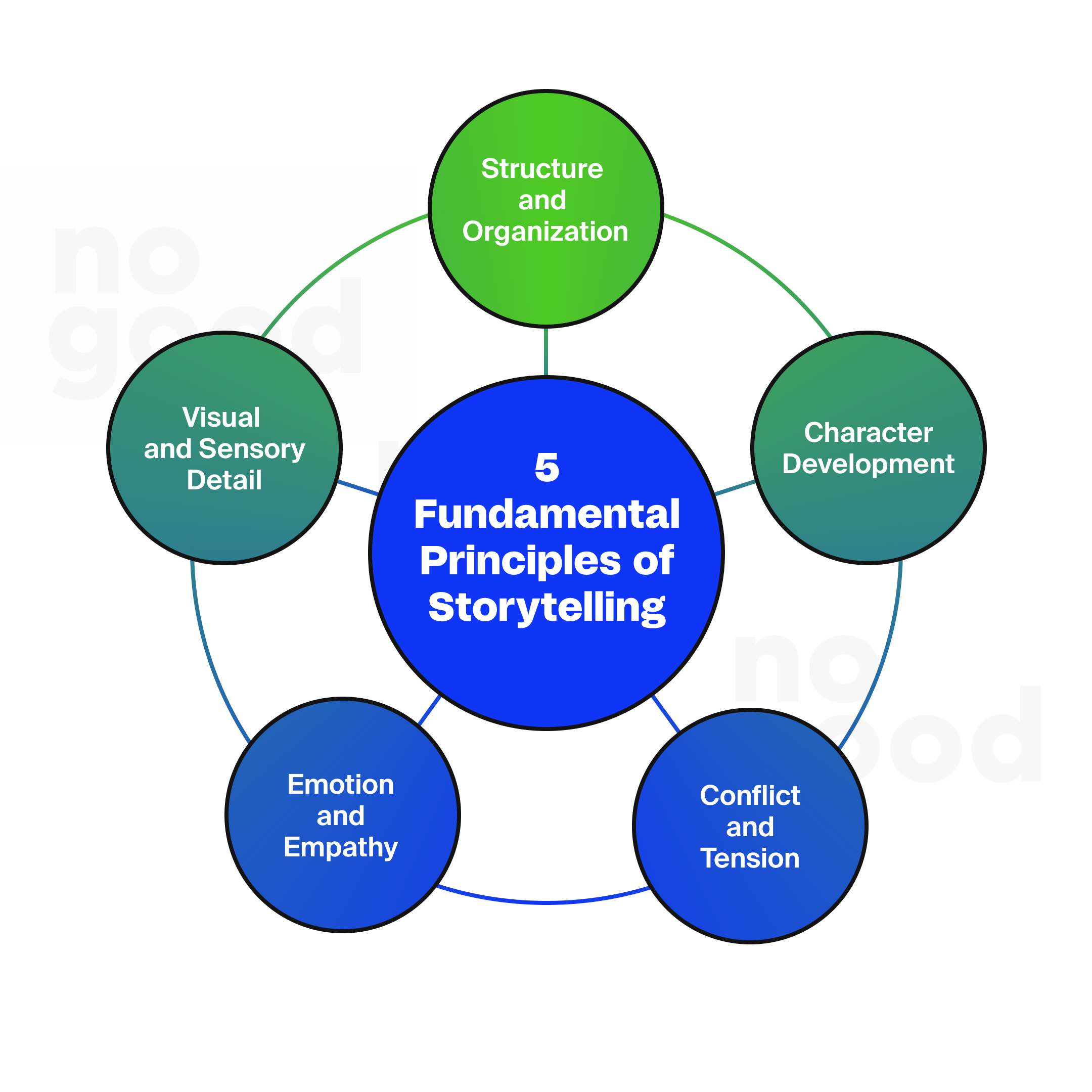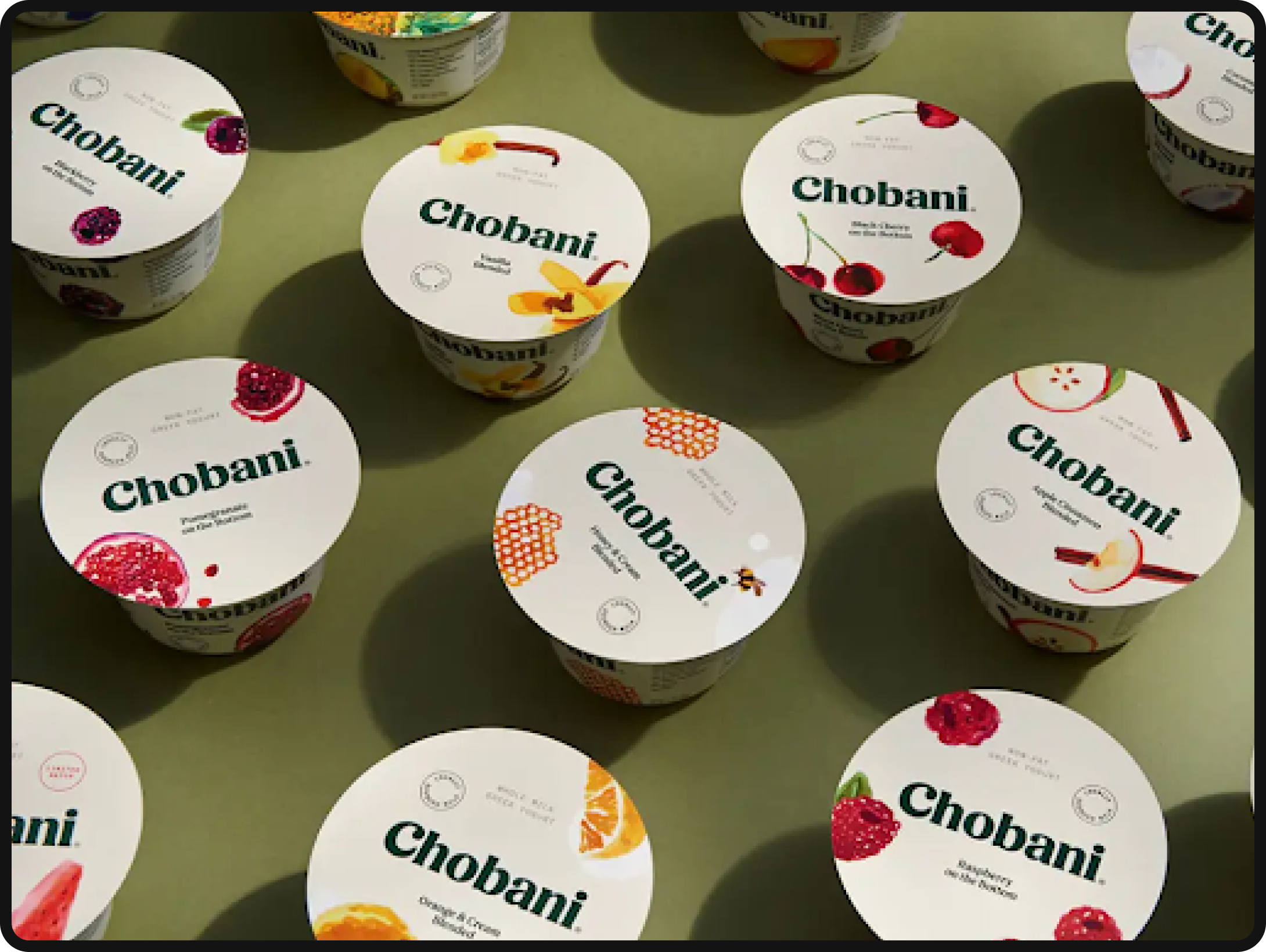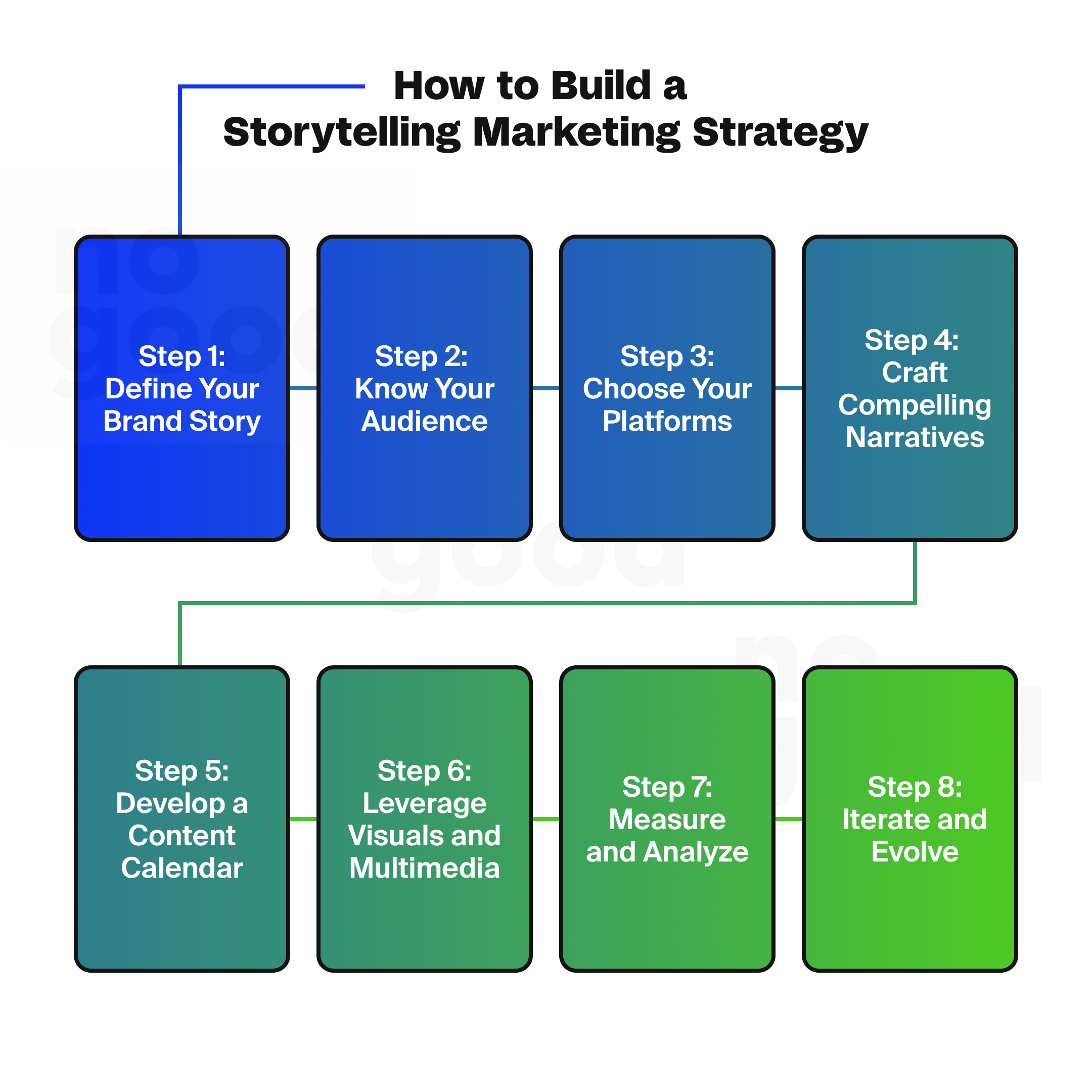In the ever-evolving landscape of marketing, one timeless truth remains: people love stories. With the power of stories, you can captivate, inspire, and connect on a deep, emotional level. They have the ability to transport us to different worlds, evoke powerful emotions, and leave a lasting impact on our lives.
That’s why storytelling in marketing is so powerful. Storytelling marketing is about crafting narratives that resonate with your target audience, creating a sense of belonging, and nurturing a brand identity that goes beyond mere products or services. It’s about understanding the psychology of human behavior and using that knowledge to form meaningful connections. By tapping into the timeless power of narrative, brands can convey their values, evoke emotions, and drive loyalty in an increasingly competitive landscape. It’s a strategic approach that humanizes marketing messages, making it not just about products or services but about shared experiences and shared values.
What is storytelling?
Storytelling, at its core, is the art of conveying a core message or information through the structure of a powerful narrative. It’s a timeless human tradition that predates the written word, dating back to the days when stories were passed down orally from one generation to the next. While storytelling has evolved over the centuries, its fundamental essence remains unchanged: it’s about creating a compelling, structured narrative that engages and resonates with an audience.
Good stories are simple, but the process and act of storytelling are anything but. Here are 5 fundamental principles of storytelling to keep in mind:
- Structure and organization: Successful storytelling often follows a clear structure, such as the three-act structure (beginning, middle, and end) or a hero’s journey. This helps in creating a logical and engaging progression of events, building anticipation, and maintaining the target audience’s interest.
- Character development: Strong characters are at the core of engaging stories. Effective storytelling involves creating relatable, multidimensional characters with their own motivations, flaws, and arcs. Audiences should be able to connect with and care about the characters.
- Conflict and tension: Conflict is the engine that drives a story forward. It creates tension and keeps the audience engaged. Whether it’s internal or external conflict, challenges and obstacles should be introduced to test the characters and propel the narrative.
- Emotion and empathy: Stories that evoke emotion are more memorable and impactful. Effective storytelling taps into the audience’s emotions, whether it’s through humor, drama, suspense, or empathy. When readers or viewers connect emotionally with the story, they become more invested in its outcome.
- Visual and sensory detail: Descriptive language and sensory details help paint a vivid picture in the audience’s mind. Engaging storytelling appeals to the senses, allowing the audience to visualize scenes, hear dialogue, and even feel the emotions of the characters. This sensory engagement enhances the overall storytelling experience.
These storytelling principles provide a strong foundation for crafting narratives that resonate with audiences within a marketing context but also in more mainstream forms of storytelling such as literature, film, or really any other form of communication.

What is a storytelling marketing strategy?
A storytelling marketing strategy is a powerful approach that leverages the power of storytelling to connect with your audience on a deeper, more emotional level. It goes beyond traditional marketing by weaving a narrative that engages, captivates, and resonates with consumers. This strategy involves crafting compelling stories around your brand, products, or services, transforming them into relatable and memorable experiences for your target audience. By doing so, you not only communicate the value and uniqueness of your offerings but also create a genuine connection with your customers.
Stories have an exceptional power to make information memorable. When information is presented as a story, it becomes more relatable and easier to digest. This means that not only are customers more likely to remember your brand and its message, but they are also more likely to share it with others. Word-of-mouth marketing, driven by compelling stories, can lead to organic growth and increased brand advocacy.
Storytelling marketing can take various forms, from blog posts and social media posts to video campaigns and customer testimonials, allowing you to convey your message in a way that leaves a lasting impact and fosters brand loyalty. Here are some ways in which storytelling marketing can be used across different channels and formats:
- Blogs and articles: Craft engaging narratives within your blog posts and articles. Share stories that relate to your brand, products, or industry. These written formats allow for in-depth storytelling, providing valuable information while keeping readers engaged.
- Social media channels: Utilize the storytelling technique on platforms like Facebook, Instagram, and LinkedIn. Use compelling captions, image captions, or short video clips to convey your brand’s story, values, and mission. Instagram Stories, in particular, are great for creating sequential narratives.
- Video content: Videos are a powerful medium for storytelling marketing. Create brand stories, customer testimonials, or explainer videos that take viewers on a journey. Videos can be shared on your website, YouTube, TikTok, or even as short-form video ads.
- Email marketing: Incorporate storytelling in your email marketing campaigns. Share personal anecdotes, success stories, or behind-the-scenes glimpses of your business to connect with subscribers and build trust.
- User-generated content: Encourage your customers to share their own stories and experiences with your brand. Repost their content on your social media or website as testimonials, reviews, or case studies.
Incorporating storytelling marketing across these diverse channels and formats ensures that you can reach your audience where they are most active and engaged, tailoring your stories to fit the medium and platform while maintaining a consistent brand narrative.
What are some examples of storytelling marketing?
Let’s break down some of the most impressive examples of storytelling marketing and find out what made them so successful.
1. Chobani
Chobani’s storytelling marketing approach has proven to be highly effective due to its authenticity and relatability. Instead of just promoting yogurt, Chobani focuses on the human stories behind the product.
One notable example of Chobani’s storytelling marketing is their “Chobani Food Incubator” program. This initiative not only promotes their products but also tells a compelling story about their commitment to supporting emerging food entrepreneurs and fostering innovation in the food industry. Through this program, Chobani provides mentorship, resources, and funding to small food startups that align with their values of health, quality, and sustainability.
Chobani shares the stories of these food entrepreneurs, their culinary journeys, and their dedication to creating innovative and wholesome products. By doing so, Chobani doesn’t just promote its brand; it cultivates a sense of community and highlights the importance of nurturing the next generation of food innovators. This storytelling marketing approach resonates with consumers who appreciate Chobani’s mission to not only provide delicious yogurt but also contribute to positive change in the food world. It’s a prime example of how Chobani has successfully integrated storytelling into its marketing strategy to engage, inspire, and build strong connections with its audience.

2. Patagonia
Patagonia’s approach to storytelling marketing is characterized by its unwavering commitment to its core values and its relentless focus on environmental activism. What sets Patagonia apart and contributes to its remarkable success is the brand’s authenticity. Patagonia doesn’t just tell stories; it lives them. From founder Yvon Chouinard’s early adventures to the company’s pioneering efforts in sustainable and ethical practices, Patagonia’s narrative is firmly rooted in its actions.
Their storytelling revolves around real issues like climate change, conservation, and responsible consumption. Patagonia doesn’t shy away from taking a stance and using its platform to advocate for environmental causes. This authenticity resonates deeply with consumers who share their concerns, creating a powerful bond between the brand and the audience. Patagonia’s success lies in its ability to turn storytelling into a call to action. By living its values and encouraging consumers to do the same, Patagonia has not only built a loyal customer base but also fostered a global movement for environmental awareness and change. Their storytelling marketing isn’t just about selling outdoor gear; it’s about inspiring a shared sense of responsibility for the planet.
One powerful example of Patagonia’s storytelling marketing in action is their “Worn Wear” campaign. This initiative encourages customers to buy used Patagonia clothing and gear, repair their existing items, and recycle old products. Patagonia not only promotes sustainability but also creates a narrative around the idea that their products are built to last.
In this campaign, Patagonia showcases stories of individuals and their well-loved, well-worn Patagonia gear. These stories are shared through various mediums, including videos, blog posts, and social media. Each story highlights the durability and longevity of Patagonia products, often showcasing the adventures and experiences the clothing and gear have been a part of.

By telling these stories, Patagonia reinforces its commitment to reducing waste and its mission to “Build the best product, cause no unnecessary harm, use business to inspire and implement solutions to the environmental crisis.” They encourage customers to take part in this sustainability journey and make conscious choices when it comes to their outdoor gear. This storytelling marketing approach not only promotes brand loyalty but also aligns Patagonia with values of environmental stewardship and responsible consumption, resonating deeply with their environmentally-conscious audience.
3. Le Labo
What sets Le Labo’s strategy apart and contributes to its remarkable success is the brand’s emphasis on personalized, handcrafted fragrances. Le Labo shuns mass production in favor of a bespoke approach, where customers can witness their fragrance being blended on-site, complete with a customized label. This transparency and hands-on experience resonate deeply with consumers seeking unique, artisanal products in a world dominated by mass-produced scents.
Le Labo’s storytelling centers around the craft and artistry behind each fragrance. They highlight the origin of ingredients, the skilled perfumers, and the meticulous blending process. This narrative evokes a sense of authenticity, craftsmanship, and a connection to nature, which aligns perfectly with the desires of a discerning and mindful customer base. Le Labo’s minimalist and eco-friendly packaging also tells a story of sustainability and simplicity. Their success lies in their ability to turn the act of buying perfume into a deeply personal and memorable experience, fostering customer loyalty and word-of-mouth advocacy.
One standout example of Le Labo’s storytelling marketing brilliance is their “City Exclusive” fragrance collection. Each year, Le Labo releases a limited number of unique scents, each inspired by and dedicated to a specific city, such as New York, Tokyo, or Paris. What makes this campaign remarkable is how it weaves a narrative around the essence of each city. Le Labo crafts stories that evoke the spirit, culture, and emotions associated with these urban landscapes, making the scents a sensory journey for their customers.
This storytelling marketing approach not only creates a sense of exclusivity and anticipation but also invites customers to connect with the essence of these iconic cities in a deeply personal way. By associating scents with the stories of places and memories, Le Labo transcends the notion of just selling perfumes; they offer an olfactory passport to travel through emotions and experiences. It’s a prime example of how Le Labo has leveraged storytelling to make fragrances more than just scents; they’re narratives, memories, and emotions bottled up and shared with their discerning audience.

How to build a storytelling marketing strategy

Step 1: Define your brand story
Before you begin, you will first need a clear understanding of your brand’s story. What is your mission, values, and unique selling proposition (USP)? What inspired the creation of your brand, and what problems does it solve for your customers? Develop a compelling brand narrative that serves as the foundation for all your storytelling efforts.
Step 2: Know your audience
Effective storytelling hinges on knowing your audience inside and out. Conduct thorough research to understand their demographics, preferences, pain points, and aspirations. Tailor your narratives to resonate with your target audience, ensuring that they can relate to and connect with your stories.
Step 3: Choose your platforms
Select the platforms and channels where you’ll share your stories. Consider your audience’s online habits and preferences. Whether it’s social media, blogs, videos, podcasts, or a combination, align your storytelling with the platforms most likely to reach and engage your audience effectively.
Step 4: Craft compelling narratives
Create stories that convey your brand’s values and resonate with your audience. Your narratives should be relatable, emotionally engaging, and aligned with your brand’s messaging. Use elements like characters, conflict, and resolution to weave narratives that captivate your audience.
Step 5: Develop a content calendar
Consistency is key in storytelling marketing. Develop a content calendar that outlines when and where you’ll share your stories. This ensures a steady flow of content that keeps your audience engaged and builds anticipation.
Step 6: Leverage visuals and multimedia
Enhance your storytelling with visuals, videos, and multimedia elements. Visual content is more likely to capture attention and convey emotions effectively. Consider incorporating user-generated content, infographics, and even live streams into your strategy.
Step 7: Measure and analyze
Regularly track the performance of your storytelling efforts. Use analytics tools to measure engagement, reach, and conversions. Analyze the data to gain insights into what’s working and what needs improvement. Adjust your strategy accordingly to optimize results.
Step 8: Iterate and evolve
Storytelling marketing is an evolving process. Continuously refine your strategy based on feedback and data-driven insights. Experiment with different storytelling approaches, formats, and messaging to keep your audience engaged and interested.
Building a storytelling marketing strategy takes time and effort, but when done effectively, it can create a profound connection between your brand and your audience.
What’s your story?
Storytelling marketing is more than just a buzzword; it’s a dynamic and impactful strategy that has the potential to transform how brands connect with their audiences. By weaving compelling narratives into their messaging, companies can create authentic, emotional connections with consumers.
We’re in an era where consumers (particularly Gen Z consumers) seek more than just products or services; they crave experiences, stories, and a sense of belonging. Storytelling marketing is the bridge that leads brands and audiences to that shared destination, creating not just customers but brand advocates who champion a company’s story as their own.
If you’re ready to start telling your brand story, we’re here to help you make that happen.




